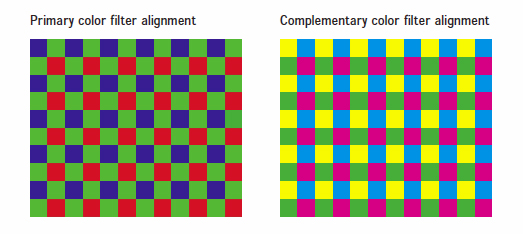Color filters are required to extract CCD color information, which is needed to create a color photograph. Two types of filters are used: an RGB primary color filter that consists of three colors (red, green and blue) and a CMYG complementary color filter that consists of four colors (cyan, magenta, yellow and green). Generally speaking, RGB primary color filters tend to produce more vivid colors, while complementary color filters excel in sharpness and sensitivity. However, the overall performance, including that of the camera's image processing engine, is most important. |




